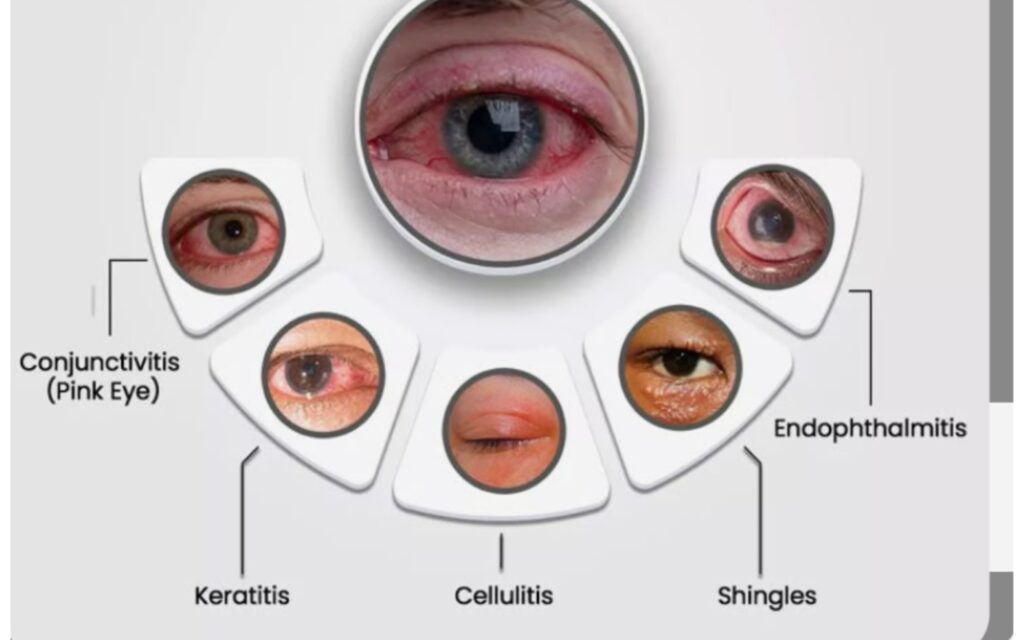Step 1: Recognize an Eye Emergency
Not all eye issues are emergencies, but certain symptoms demand immediate care. Common scenarios include:
- Chemical Exposure: Burns from cleaners, industrial chemicals, or aerosols.
- Foreign Objects: Debris embedded in the eye or under the eyelid.
- Trauma: Blunt or sharp injuries (e.g., sports accidents, falls).
- Sudden Vision Changes: Loss of vision, double vision, or flashes of light.
- Severe Pain or Redness: Persistent discomfort or blood in the eye.
- Infections: Swelling, pus, or extreme sensitivity to light.
When in doubt, err on the side of caution and seek professional help.

Step 2: Administer Immediate First Aid
Act quickly while preparing to seek professional care:
- Chemical Burns:
- Flush the eye with lukewarm water for 15–20 minutes. Tilt the head to let water flow from the inner to outer eye.
- Remove contact lenses if possible.
- Foreign Objects:
- Do not rub the eye. Blink repeatedly to encourage tearing.
- Use saline solution to rinse. If the object is embedded, do not attempt removal—cover the eye and seek help.
- Eye Trauma:
- Gently cover the eye with a rigid shield (e.g., a paper cup) to avoid pressure.
- Avoid aspirin or NSAIDs to reduce bleeding risk.
- Sudden Vision Loss:
- Keep the eye still and avoid straining. Have someone drive you to a clinic.
Avoid:
- Rubbing the eye.
- Using tweezers or tools to remove objects.
- Applying ointments without medical advice.
Step 3: Locate Emergency Eye Care
Options for Immediate Care:
- Emergency Rooms (ER): Equipped for severe trauma or chemical burns. Ideal for 24/7 access.
- Urgent Care Centers: Some have ophthalmologists on-site for stitches, object removal, or infections.
- Eye Clinics or Ophthalmologists: Specialized care for issues like retinal detachment.
How to Find Services Near You:
- Online Search: Use terms like “24-hour emergency eye care near me” or “ophthalmologist urgent care.”
- Insurance Provider: Check your insurer’s directory for in-network options.
- Apps: Platforms like Zocdoc or Yelp list real-time availability and reviews.
- Hotlines: Call your eye doctor’s after-hours line for referrals.

Step 4: Seek Professional Treatment
What to Expect During the Visit:
- Triage: The medical team will assess the urgency of your condition.
- Diagnostics: Tests may include fluorescein stains to detect scratches, tonometry for eye pressure, or imaging scans.
- Treatment:
- Foreign Objects: Numbing drops and sterile tools for removal.
- Chemical Burns: Continued irrigation and pH balance checks.
- Trauma: Surgery may be needed for cuts or fractures.
- Infections: Antibiotic drops or oral medications.
Questions to Ask:
- Is there permanent damage?
- What follow-up care is required?
- Are there activity restrictions?
Step 5: Follow-Up Care
- Medications: Use prescribed antibiotics or anti-inflammatory drops as directed.
- Rest: Avoid screens, heavy lifting, or swimming until cleared.
- Monitoring: Report worsening pain, vision changes, or discharge immediately.
Step 6: Prevent Future Emergencies
- Protective Gear: Wear safety glasses during sports, DIY projects, or hazardous work.
- Chemical Safety: Store cleaners securely; rinse eyes immediately after exposure.
- Contact Lens Hygiene: Avoid sleeping in lenses and replace them as scheduled.
- Childproofing: Keep sharp objects and chemicals out of children’s reach.
Conclusion
Quick action and knowledge of local resources are vital in eye emergencies. By recognizing symptoms, administering first aid, and seeking prompt care, you can safeguard your vision. Always prioritize prevention and stay prepared with emergency contacts.
Disclaimer: This guide is informational and not a substitute for professional medical advice. Consult a healthcare provider for personalized care.
Key Takeaways: Clarity, actionable steps, and prevention-focused advice ensure readers are equipped to handle eye emergencies confidently.

